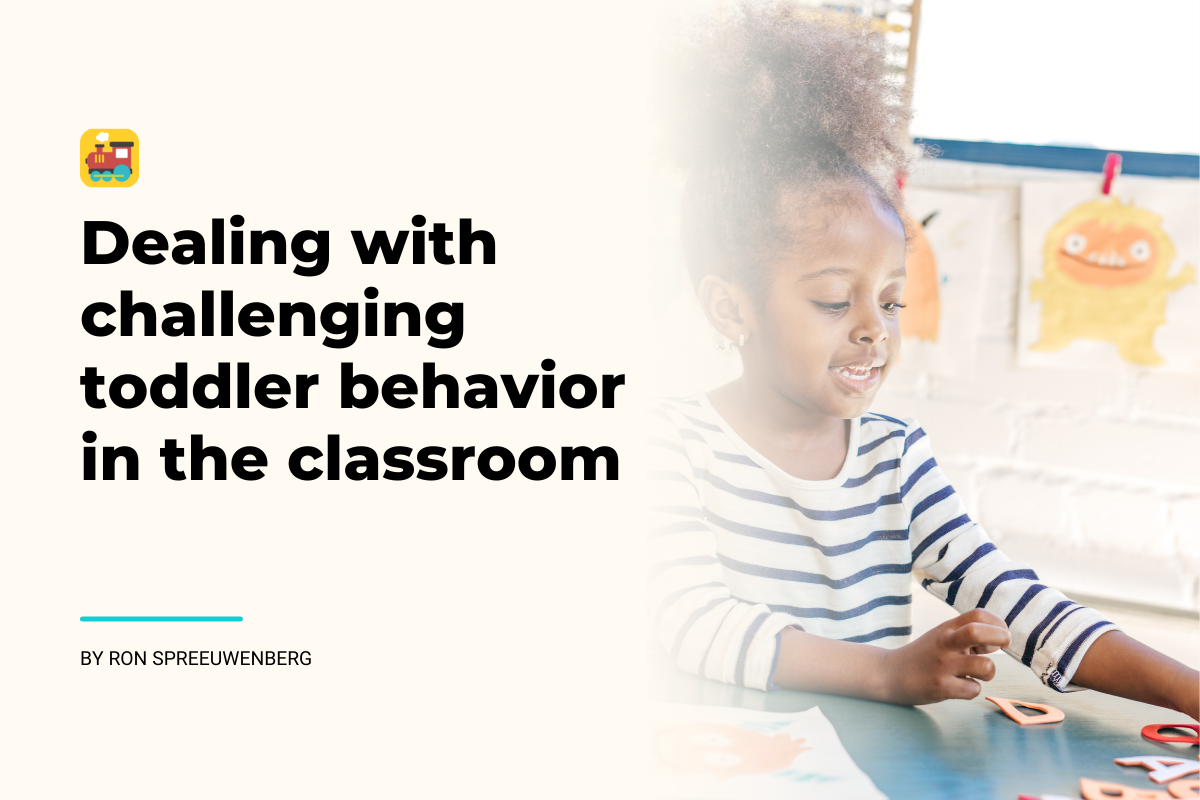As an early years educator, you likely feel that you have tried every trick in the book when it comes to dealing with challenging behavior in young children. Whether a child throws a fit, becomes aggressive, or is overly emotional, there are ways to assess and manage this difficult behavior.
When faced with a difficult situation, the best approach is to try to be patient and work to find the right solution through to resolve the child’s issue. Though it may not seem like it at first, with time you will be able to find a method that works for each individual child. Begin by carefully observing the challenging behavior, then take action to rectify it.

Observe and identify the behavior
If you notice difficult behavior coming from a child in your care, stop and record your observations. Make note of what time this behavior was displayed, which other children were around, what environment the child was in and what happened before, during, and after the incident. Over time, you may begin to see a pattern developing and identify a cause of the behavior. Perhaps a child demonstrates the challenging behavior when playing with a certain classmate. Or, when meal time comes around, another child repeatedly lashes out. By carefully monitoring and addressing these situations, you can begin to identify why they may be happening.

Use behavior management techniques
Once you understand the potential triggers of the challenging behavior, you can begin to try behavior management techniques to break the cycle. Here are some effective methods other early childhood educators like you have used to deal with difficult behavior in the classroom:
Praise good behavior while ignoring negative behavior.
Positive reinforcement will help the child focus on what is expected of them and encourage good behaviors.
Try a classroom reward chart.
Children will then be able to visually see their positive behaviors over the course of the day or week.
Use positive language.
Ask children to demonstrate the behavior you wish to see rather than asking them to stop what they are doing. For example, say, “please wait your turn” rather than “stop cutting in line.”
Create a visual schedule.
Some children display challenging behavior when they are unsure of when they will be allowed to do a certain activity or don’t know what is happening next. Create a schedule of the day’s activities and show the child what they will be doing throughout the day and when.
Communicate with parents
Open and honest communication with parents is key when dealing with challenging behavior in young children. Ensure that parents are aware of the behaviors their child is displaying, and inquire whether they are seeing the same types of patterns at home. Work together to see if you can find a solution, and ensure that both caregivers at home and at daycare are on the same page about how to manage the behavior. Caregivers should always keep parents up to date about behavior changes or techniques you have found to work well.
HiMama is an excellent solution to document and track incidents, as well as record observations and suggestions on how to manage behavior. Learn more about communicating with parents and keeping them informed of challenging behavior – get in touch with one of our Community Advisors who would be pleased to book a call with you to discuss further.
Make sure to document all of the challenging behaviors so you can come up with the best game plan!

Related Posts
- Managing Challenging Behavior in Young Children Using Positive Behavior Support
- How to Document Challenging Behavior at Preschool
- How To Address Challenging Behavior Taught by Parents
- A Preschool Teacher’s Guide to Understanding and Ending Biting
- How to Understand and Love the “Difficult” Child (With Free Behavior Chart)





I need help where do I find Help? I need to work my son 4years old keep getting kicked out of day care so I keep losing my jobs can’t pay rent so I get eviced I am a single mom I need help. !!!
Hi Janie, I see your comment here you have a child who is dealing with challenging behavior, I have a very helpful booklet which offers ideas and strategies that have been proven to work. This strategies can benefit all children ,not just those with challenging behaviours.
https://www.amazon.ca/Meeting-Challenge-Strategies-Challenging-Environments/dp/B01K2P1MUE
Janie, I suggest looking into a developmental preschool offered through your local school corporation. Your child would need to qualify, but if they have challenging behaviors, there is a good chance that they would. It is free of charge and they are there to teach your child how to behave in school as well as meet their needs with speech and counseling.
Where can I look up sample of challenging behavior observations or andedotal.
Thanks for Sharing great informative article, This will surely help all the parents.
Nice article, thanks for providing such good ideas. Keep up the good work